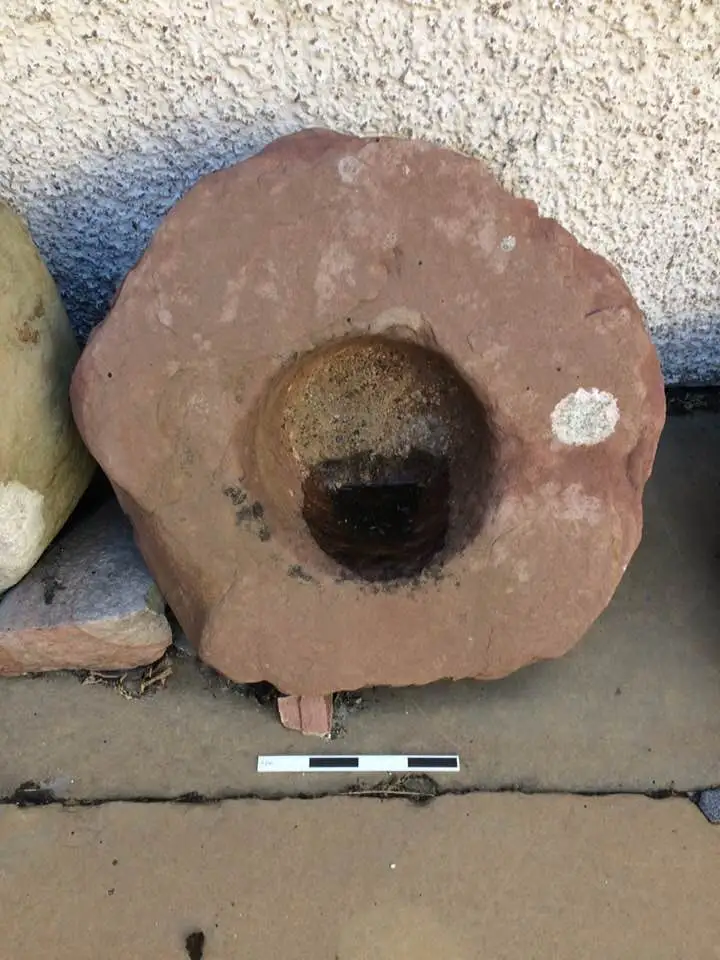Knocking Stones

Tom Muir, Engagement and Exhibitions Officer. Photographs by Gail Drinkall, Curator of Archaeology.
When you enter the courtyard at the Orkney Museum you will see many large stone vessels, like mortars. These are ‘knocking stones’, which were used in the preparation of food for a family. They are ancient in origin but remained in use in Orkney until the 19th century.


A knocking stone was used to husk barley, or other grain, in small quantities. Their use goes back into prehistory and they were mostly replaced with the introduction of the rotary hand quern. But knocking stones served a different function. While a quern could be set to grind out coarse or fine meal (flour) for the baking of bannocks, a knocking stone was used to pound the grain, to remove the husks and to bruise the grain ready to be used in cooking. ‘Burstan’ was a staple diet in Orkney, comprising of barley that had been ‘knocked’ in the stone and then roasted in an iron pot over the fire. Kirn milk (buttermilk) was then added and a simple porridge made. Burstan had its dangers though. If an uncooked lump of burstan was eaten its dry dust, if inhaled, caused extreme coughing. It is interesting to note that every island and parish in Orkney had its own nickname, known as a ‘tee-name’ or ‘teu-name’. The residents of the island of Egilsay were known as ‘burstan lumps’. This simple dish was an important part of any crofting families diet, along with dried fish. Very little meat was eaten, as people couldn’t afford to eat their animals, which were sold to those who could afford to.

The implement used to knock the corn could be something as simple as a beach stone. Usually it was a mallet-like tool called a ‘mell’. My North Isles parents would have called it a ‘maal’. The mell was usually made of a hard wood, like oak, for the head with a handle of pine. The hole in the head for the handle was off-set to one end, so that the longer end could reach the bottom of the knocking stone. You can see an example in the photograph above.


There is a record from the 17th century of someone being sanctioned by the Kirkwall church for knocking corn on the Sabbath. The tell-tale sound of the thumping of the mell in the knocking stone was heard by an outraged individual who then informed on the hungry transgressor.



The extremely fine example in the three photos above is so well made that I have often wondered if it was a knocking stone at all, or an early font. It may have been reused as a knocking stone. Recycling is nothing new in Orkney. It was broken long ago and then mended in the 1990s by Colin Watson, who was the stone mason at St Magnus Cathedral at that time. It stood in the back courtyard of Tankerness House Gardens for a short time, along with other knocking stone, but vandals broke it again, with the aid of a stone mortar that was also on display in the gardens. It was decided to move the vulnerable artefacts into the front courtyard, which is secured at night. The knocking stones out the back may have been there since the Baikie family lived in the house.





When I was a child in Tankerness there was a knocking stone under construction that had been abandoned on the shore below the farm of Weethick, on Inganess Bay. It had been roughly shaped and a pecked circle on the top showed where it was to be hollowed out. Why it was never finished is impossible to know, but on a flat, rocky shore it stood out starkly compared to its surroundings. I used to stand on top of it when I was small and had a great attachment to it. Sadly, when I went to pay my regards to it a few years ago it was gone. I suppose it could be a garden feature now, but it was such a landmark to me as a child that I felt its loss very strongly.
So, the next time that you visit the museum, spare a thought for those knocking stones in the courtyard. They were the food processors of an earlier time.

